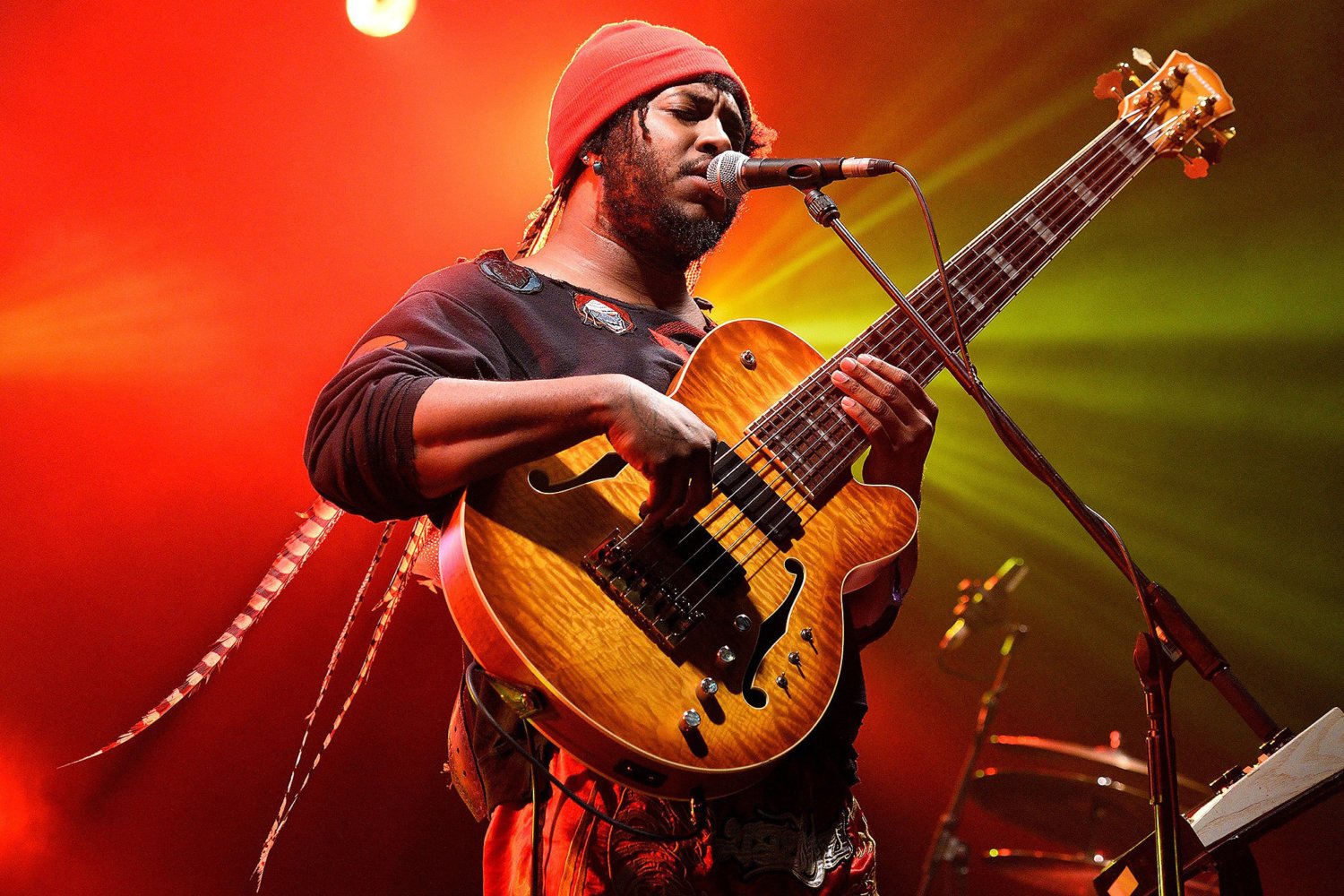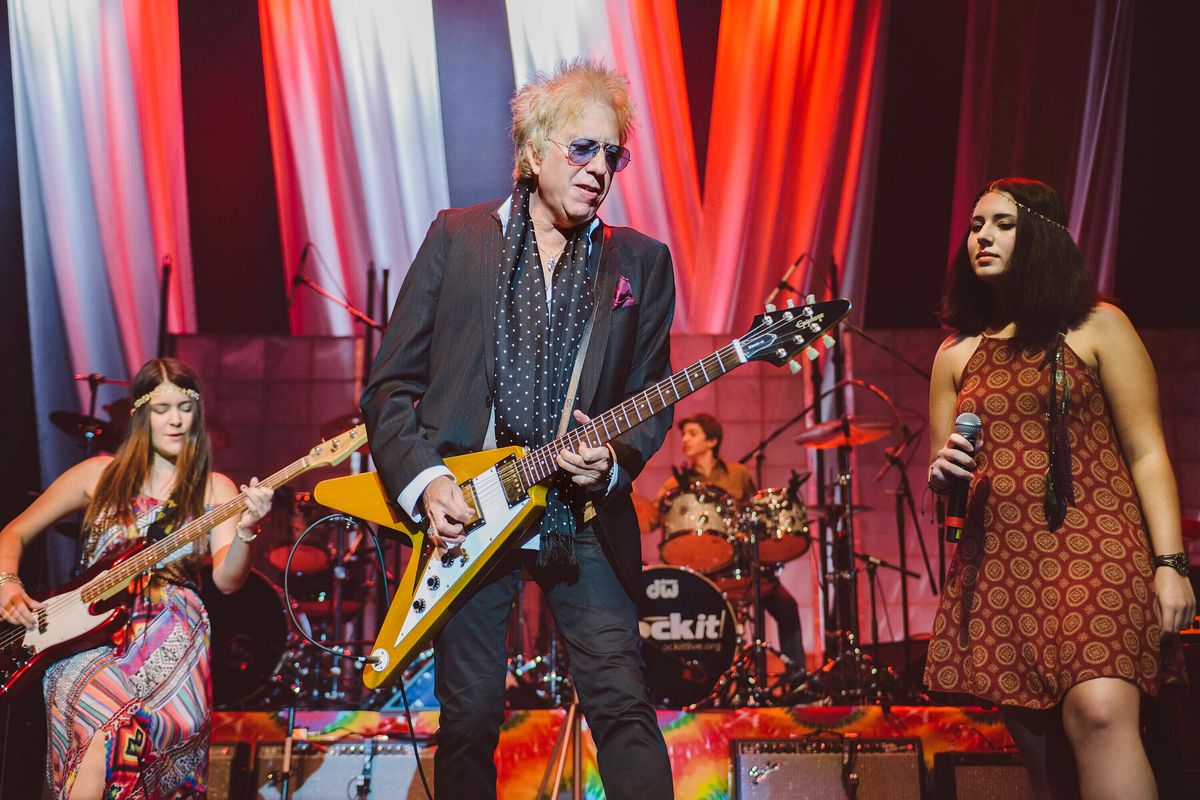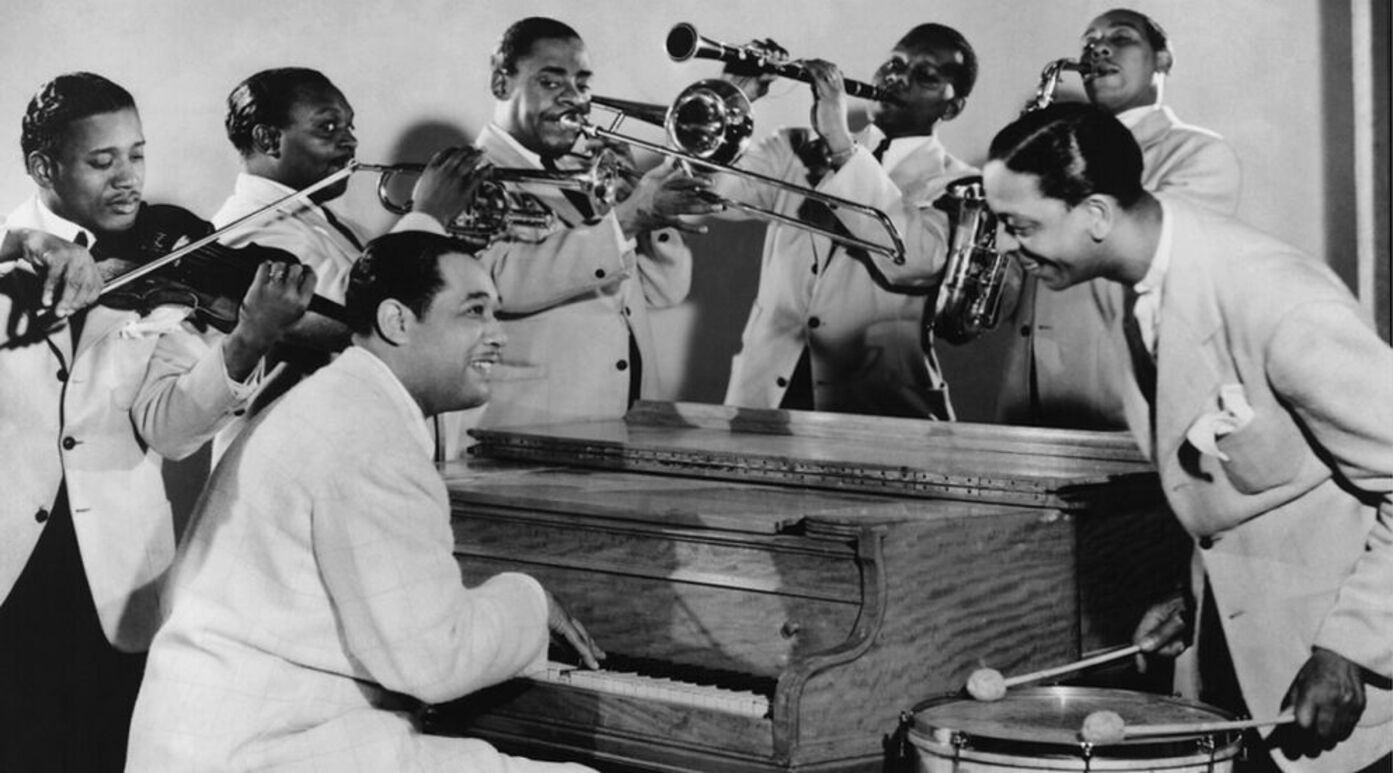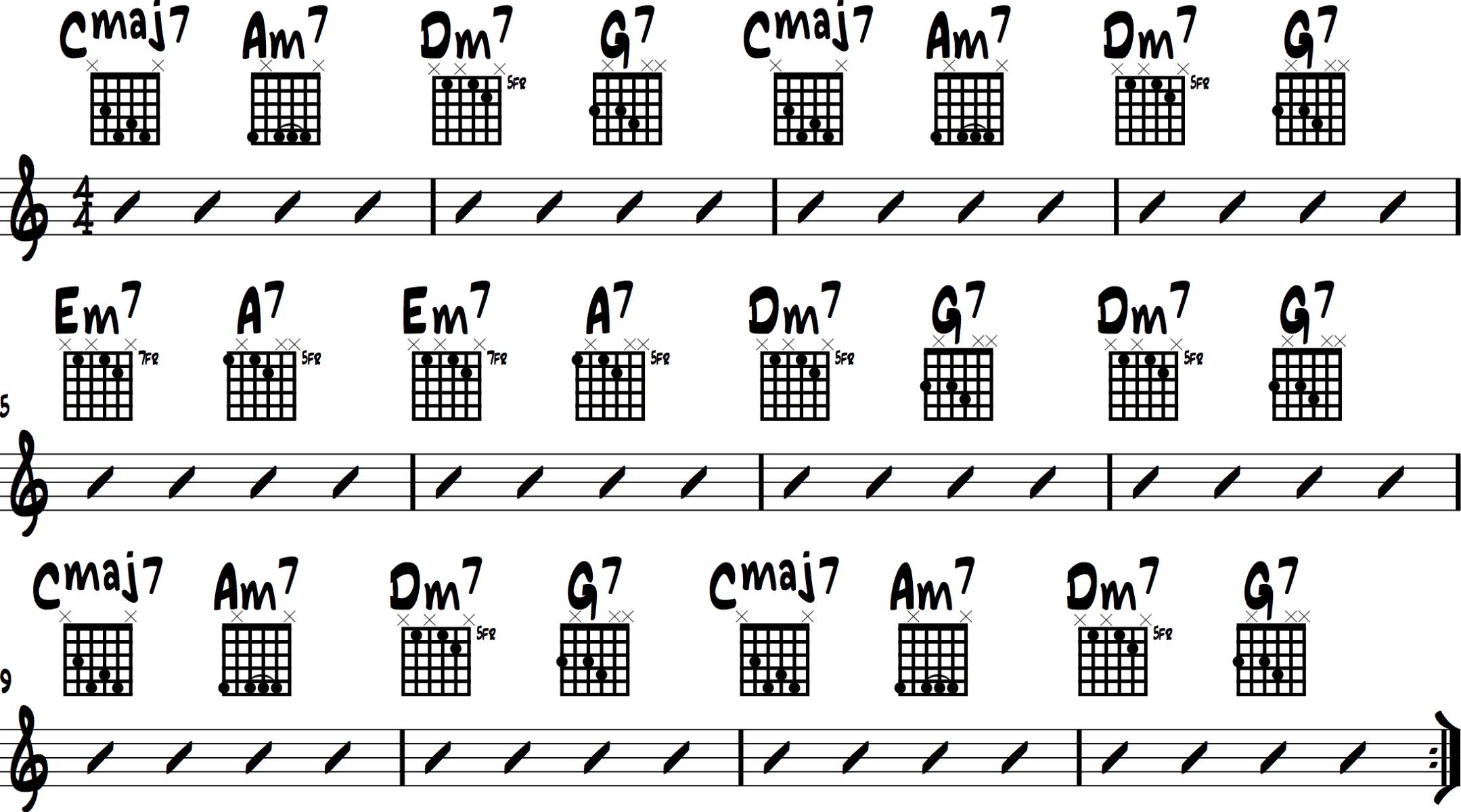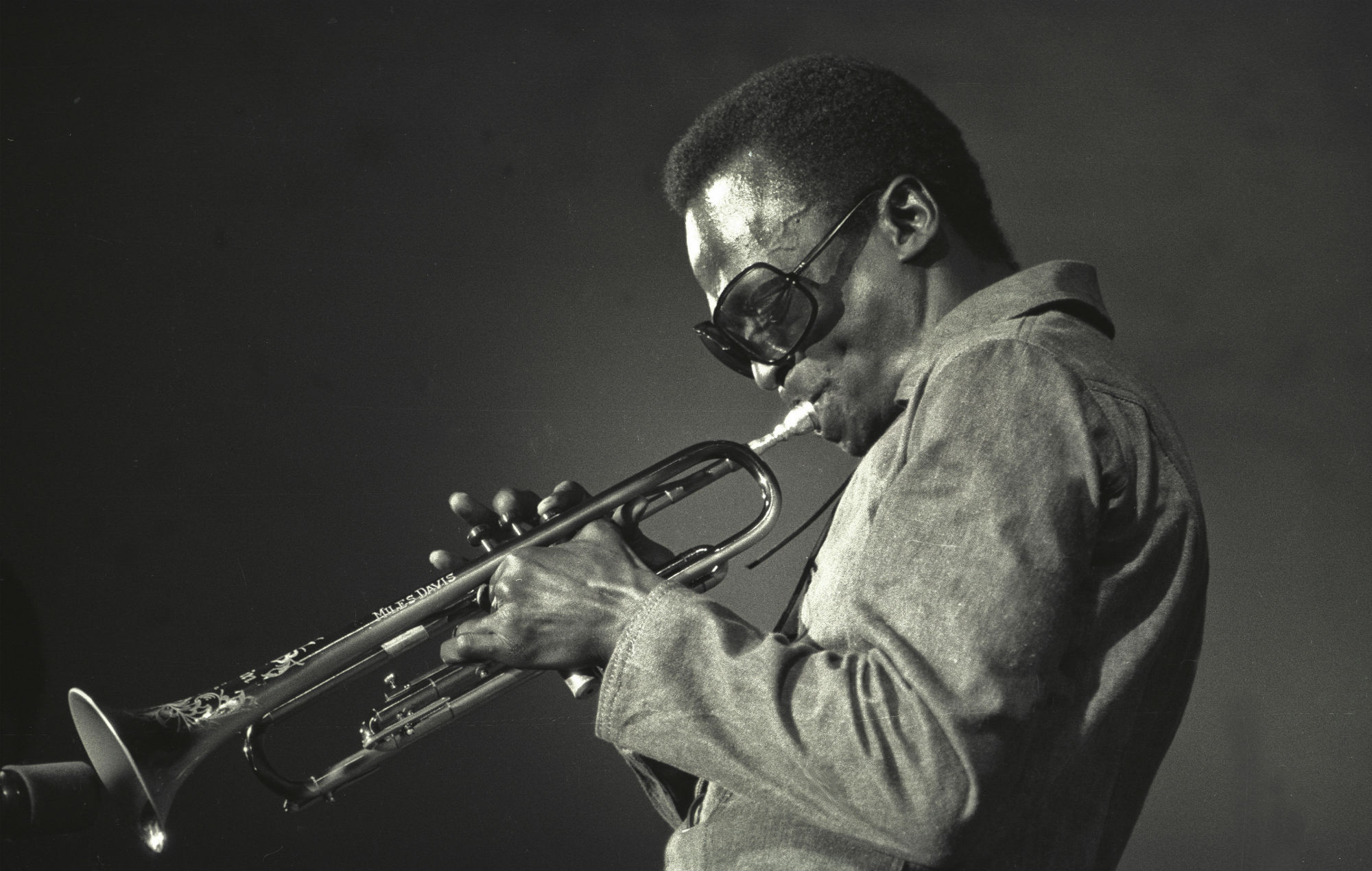

Jazz
What Is The Most Popular Jazz Song
Modified: January 22, 2024
Discover the All-Time Favorite Jazz Song: Explore the popularity of jazz music and find out the most beloved jazz composition loved by millions worldwide.
(Many of the links in this article redirect to a specific reviewed product. Your purchase of these products through affiliate links helps to generate commission for AudioLover.com, at no extra cost. Learn more)
Table of Contents
- Introduction
- The History of Jazz Music
- Defining Jazz: Characteristics and Elements
- The Evolution of Popular Jazz Songs
- Factors That Determine a Popular Jazz Song
- Analyzing Jazz Popularity: Sales, Streaming, and Radio Airplay
- Iconic Jazz Songs and Their Popularity
- Influential Jazz Artists and Their Most Popular Songs
- The Great American Songbook: Jazz Standards
- Contemporary Jazz Hits and Their Popularity
- Conclusion
Introduction
Welcome to the world of jazz, a genre of music that has captivated audiences for decades. Jazz is a unique and innovative art form that originated in the early 20th century in African-American communities in the United States. It has since spread its influence worldwide, leaving an indelible mark on the music industry.
Characterized by its improvisation, syncopation, and rhythmic complexity, jazz has become synonymous with creativity and freedom of expression. From its humble beginnings in New Orleans, it has evolved and diversified, giving birth to numerous subgenres and styles.
In this article, we will explore the fascinating history of jazz music, delve into the defining characteristics and elements that set it apart, and uncover the evolution of popular jazz songs. We will also examine the factors that determine a jazz song’s popularity and analyze its impact on various platforms such as sales, streaming, and radio airplay. Furthermore, we will highlight some iconic jazz songs throughout history and shed light on influential jazz artists and their most popular tunes.
Additionally, we will delve into the world of the Great American Songbook, which is filled with jazz standards that have stood the test of time. These songs, composed by legendary musicians and lyricists, continue to be performed and celebrated today.
Lastly, we will explore the contemporary jazz landscape and examine some of the recent hits that have gained popularity among jazz enthusiasts and mainstream audiences alike.
So, whether you’re a seasoned jazz aficionado or someone looking to delve into this rich musical genre, join us as we embark on a journey through the wonderful world of jazz and discover the most popular jazz songs that have shaped its legacy.
The History of Jazz Music
Jazz music traces its roots back to the late 19th and early 20th centuries in New Orleans, Louisiana. It emerged as a fusion of African and European musical traditions, combining elements of ragtime, blues, spirituals, and marching band music.
During the early years, jazz was predominantly performed by African-American musicians in the city’s vibrant and diverse neighborhoods. It served as a means of cultural expression and a way to communicate emotions and experiences. Musicians such as Jelly Roll Morton, Louis Armstrong, and King Oliver played pivotal roles in shaping the early jazz scene.
One of the key venues for jazz in its early years was the Storyville district of New Orleans, where jazz musicians would often perform in brothels and saloons. This environment allowed for experimentation and improvisation, setting the foundation for the improvisational nature of jazz.
As jazz gained popularity, it began to spread beyond New Orleans to other cities, most notably Chicago and New York City. The 1920s, known as the “Roaring Twenties,” saw the rise of the Jazz Age, where jazz became the soundtrack of the era, synonymous with energy, liberation, and a new sense of freedom and rebellion.
During this time, jazz underwent various style transformations, including the emergence of big bands led by influential figures like Duke Ellington and Count Basie. These large ensembles featured brass and woodwind instruments, creating a rich and powerful sound that defined the jazz sound of the era.
By the 1930s and 1940s, jazz continued to evolve, giving rise to the bebop movement, spearheaded by musicians such as Charlie Parker and Dizzy Gillespie. Bebop was characterized by intricate melodies, complex chord progressions, and rapid-fire improvisation, challenging the conventions of swing and traditional jazz.
The subsequent decades witnessed the development of other jazz subgenres, including cool jazz, hard bop, modal jazz, and jazz fusion. Each subgenre brought its own unique elements and innovations, pushing the boundaries of jazz and ensuring its relevance and adaptability.
Today, jazz music continues to thrive, with artists from all over the world incorporating their own cultural influences and modern sensibilities into the genre. From traditional jazz clubs to international festivals, jazz maintains a dedicated and passionate following, bridging the gap between generations and cultures.
As we dive deeper into the world of jazz, we will explore the defining characteristics and elements that make jazz unique, along with the evolution of popular jazz songs that have left an indelible mark on the genre’s history.
Defining Jazz: Characteristics and Elements
Jazz is a genre of music known for its improvisation, syncopation, and rhythmic complexity. It is a genre that defies strict definitions, as it encompasses a wide array of styles and subgenres. However, there are certain characteristics and elements that are commonly associated with jazz.
Improvisation is one of the defining features of jazz. It is the art of creating music in the moment, spontaneously and intuitively. Jazz musicians often take turns soloing, creating melodies and harmonies on the spot, responding to the musical ideas of their fellow bandmates. This improvisational spirit allows for endless creativity and individual expression.
Rhythmic complexity is another hallmark of jazz. The genre incorporates a wide range of rhythmic patterns and syncopation, where accents are placed on offbeats or weak beats. This rhythmic intricacy gives jazz its distinctive swing and groove, drawing listeners into its infectious rhythms.
Harmony plays a crucial role in jazz as well. Jazz musicians often experiment with complex chord progressions, exploring unconventional harmonic structures. They use extended chords and altered harmonies to create tension and release, adding a rich and dynamic element to the music.
Another key element of jazz is its use of “call and response.” This practice involves a musical phrase or motif being played by one musician or section, followed by a response from another musician or section. This dialogue creates a sense of interplay and conversation within the music, further enhancing the improvisational and collaborative nature of jazz.
Instrumentation also plays a significant role in jazz. While it typically includes instruments such as saxophone, trumpet, piano, bass, and drums, jazz embraces experimentation and welcomes a wide range of instruments to create unique and innovative sounds. Musicians often strive to push the boundaries of their instruments, exploring new techniques and improvisational approaches.
The use of blue notes and the blues scale is another characteristic of jazz. These notes, often bent or slurred, add an expressive and soulful quality to the music. They stem from the influence of African-American blues music, which greatly impacted the development of jazz.
Jazz also possesses a sense of freedom and individuality. It encourages musicians to interpret and reinterpret compositions, allowing for personal expression and unique variations. The genre embraces the concept of “playing changes,” where musicians navigate complex chord progressions and explore different melodic possibilities while remaining connected to the harmonic framework of the song.
Overall, jazz is a genre that celebrates innovation and creativity. Its characteristics and elements combine to create a rich and diverse musical landscape, ensuring that jazz remains a vibrant and dynamic genre that continues to evolve and captivate audiences worldwide.
The Evolution of Popular Jazz Songs
Throughout the history of jazz, numerous songs have emerged as iconic and popular within the genre. These songs not only showcase the talents of the musicians but also serve as a testament to the evolution of jazz itself. From the early jazz standards to the contemporary hits, the popular jazz songs have played a significant role in shaping the genre.
In the early years of jazz, several compositions laid the foundation for the future of the genre. Songs like “Maple Leaf Rag” by Scott Joplin and “St. Louis Blues” by W.C. Handy became instant classics, blending elements of ragtime and blues into the jazz repertoire.
As jazz expanded in popularity during the 1920s, the era of the Swing Era, the big band sound took center stage. Big band leaders such as Duke Ellington, Count Basie, and Benny Goodman crafted catchy and memorable tunes that captured the essence of the era. Songs like “Take the ‘A’ Train” by Duke Ellington and “One O’Clock Jump” by Count Basie became emblematic of the swinging and energetic sound of the time.
The advent of bebop in the 1940s brought a new level of complexity and innovation to jazz. Figures like Dizzy Gillespie and Charlie Parker pushed the boundaries of the genre with their virtuosic playing and intricate compositions. Tracks such as “Salt Peanuts” and “Ornithology” showcased the rapid-fire improvisation and mind-bending harmonic structures of bebop.
The 1950s and 1960s witnessed the rise of cool jazz and modal jazz, led by artists like Miles Davis and John Coltrane. Davis’s album “Kind of Blue” featured the timeless track “So What,” which is regarded as a masterpiece of modal jazz. Coltrane’s “Giant Steps” exemplified the harmonic complexity and technical prowess of the era.
As jazz continued to evolve, fusion became a prominent subgenre in the 1970s and beyond. Artists such as Herbie Hancock and Chick Corea fused jazz with elements of rock, funk, and electronic music, creating a new and experimental sound. Hancock’s “Chameleon” and Corea’s “Spain” are prime examples of the fusion movement.
Contemporary jazz has also produced its fair share of popular songs, blending elements of smooth jazz, Latin rhythms, and contemporary pop influences. Crossover hits like “The Girl from Ipanema” by Stan Getz and Astrud Gilberto and “Cantaloupe Island” by Herbie Hancock have introduced jazz to a wider audience.
The evolution of technology and the advent of the digital age have also impacted the popularity of jazz songs. Streaming platforms and curated playlists have made it easier for people to discover and enjoy jazz music, exposing them to both new releases and timeless classics.
From its early roots to the present day, jazz music has continuously evolved, and popular jazz songs have reflected the changing musical landscape. These songs not only serve as a testament to the talent and creativity of the artists but also provide a glimpse into the diverse and ever-evolving nature of jazz.
Factors That Determine a Popular Jazz Song
What makes a jazz song popular? There are several factors that contribute to the popularity of a jazz song, ranging from musical elements to cultural influences. While the subjective nature of music makes it difficult to pinpoint exact criteria, there are key factors that can influence the success and popularity of a jazz composition.
Musicality: The musicality of a jazz song plays a vital role in its popularity. Elements such as catchy melodies, memorable hooks, and distinctive chord progressions can make a song stand out and resonate with listeners. A well-crafted arrangement and a strong sense of groove can also contribute to the song’s appeal.
Innovation and Originality: Jazz has always been a genre that encourages innovation and pushing boundaries. A jazz song that brings something fresh and unique to the table, whether it’s through unconventional harmonies, experimental arrangements, or unexpected improvisational approaches, has a greater chance of capturing the attention of both jazz enthusiasts and general music listeners.
Emotional Connection: The ability of a jazz song to evoke emotions and connect with the audience on a deeper level is crucial to its popularity. Whether it’s conveying joy, melancholy, excitement, or introspection, a song that can create an emotional response within the listener is more likely to be remembered and cherished.
Cultural Significance: Jazz has a rich cultural history and has often served as a voice for social and political movements. A jazz song that reflects the spirit of its time or addresses societal issues can resonate with a wide range of listeners, creating a sense of relevance and cultural significance. Songs like “Strange Fruit” by Billie Holiday and “Freedom Suite” by Sonny Rollins are prime examples of jazz songs that made lasting impacts due to their powerful messages.
Performance and Interpretation: Jazz is a genre that thrives on live performances and the individuality of musicians. The way a jazz song is performed and interpreted can greatly impact its popularity. A memorable and virtuosic solo, dynamic interplay between band members, and a captivating stage presence can elevate a jazz song and leave a lasting impression on the audience.
Marketing and Promotion: In today’s digital age, effective marketing and promotion can significantly contribute to the popularity of a jazz song. Strategic release plans, targeted advertising, social media campaigns, and collaborations with popular artists can all help expose a jazz song to a wider audience, increasing its chances of becoming a hit.
Timelessness: Some jazz songs endure the test of time and continue to be popular for generations. These timeless classics possess a universal appeal that transcends musical eras and cultural changes. A combination of strong songwriting, innovative arrangements, and lyrical depth contributes to the long-term popularity of these songs.
While these factors can influence the popularity of a jazz song, it is important to remember that the taste and preferences of listeners play a significant role. Personal experiences, cultural backgrounds, and individual musical tastes can all impact the perception of a jazz song’s popularity. Ultimately, a popular jazz song is one that resonates with audiences, capturing their hearts and leading them on a musical journey that they continue to cherish for years to come.
Analyzing Jazz Popularity: Sales, Streaming, and Radio Airplay
Measuring the popularity of jazz music can be challenging due to its niche status within the broader music industry. However, several key factors can provide insights into the popularity of jazz songs, including sales, streaming numbers, and radio airplay.
Sales: Traditionally, sales have been an important metric for assessing the success and popularity of music, including jazz. The number of physical and digital album sales can indicate the demand for a particular jazz song. However, it is worth noting that with the rise of digital platforms and streaming services, sales alone may not fully capture the true popularity of jazz songs in today’s music landscape.
Streaming: Streaming platforms have revolutionized the way we consume music, offering access to vast catalogs of songs at our fingertips. Analyzing streaming numbers can provide valuable insights into the popularity of jazz songs. The number of plays, followers, and playlist placements on platforms such as Spotify, Apple Music, and YouTube can give an indication of how frequently a jazz song is being listened to and shared by audiences worldwide.
Radio Airplay: Traditional radio continues to play a significant role in exposing jazz songs to a wide audience. Monitoring the number of radio spins and the positions on jazz radio charts can provide insight into the popularity of a jazz song. Jazz enthusiasts often rely on specialized jazz radio stations to discover new music and follow the latest trends.
In addition to these metrics, it is important to consider the context in which jazz songs are assessed. Jazz remains a niche genre, and its popularity may be evaluated within the specific jazz community and among devoted jazz fans, rather than solely in comparison to mainstream pop music.
Furthermore, the influence of live performances cannot be overlooked when analyzing jazz popularity. Jazz festivals, concerts, and club performances provide an opportunity for artists to connect directly with their audience and gauge the reception of their songs. The sheer energy and excitement generated during live performances can contribute to the popularity of a jazz song, fueling word-of-mouth recommendations and generating buzz.
It is essential to recognize that the popularity of jazz songs may fluctuate over time and across different regions and demographics. Jazz, by nature, is a genre that thrives on artistic expression and innovation, so what may be popular at one moment may give way to new trends and sounds in the future.
Ultimately, a comprehensive analysis of jazz popularity requires a holistic approach, considering a combination of sales, streaming numbers, radio airplay, live performances, and the perceptions and preferences of the jazz community. By examining these various aspects, we can gain a better understanding of the popularity and impact of jazz songs within their unique musical landscape.
Iconic Jazz Songs and Their Popularity
Throughout the history of jazz, certain songs have achieved iconic status, leaving an indelible mark on the genre and capturing the hearts of audiences worldwide. These songs have become synonymous with jazz and continue to be celebrated for their timeless beauty and enduring popularity.
One such iconic jazz song is “Summertime,” composed by George Gershwin for the 1935 opera “Porgy and Bess.” This hauntingly beautiful melody has become a jazz standard, recorded and performed by countless artists over the years. Its popularity lies in its ability to evoke the languid, sultry atmosphere of a summer evening, resonating with listeners on an emotional level.
Another timeless jazz classic is “Take Five” by Dave Brubeck. This innovative piece, written in the unusual time signature of 5/4, broke new ground in jazz composition. Its infectious melody and memorable saxophone solo by Paul Desmond catapulted the song to fame, making it one of the most recognizable and beloved jazz tunes of all time.
“All Blues” by Miles Davis is another iconic jazz song that has stood the test of time. Released on Davis’s legendary album “Kind of Blue,” the track showcases the introspective and atmospheric nature of modal jazz. Its haunting melody and evocative improvisations have made it a perennial favorite among jazz enthusiasts.
When discussing iconic jazz songs, it is impossible to overlook “Fly Me to the Moon” by Bart Howard. Made famous by Frank Sinatra, this romantic ballad has become a jazz standard, epitomizing the elegance and sophistication of the Great American Songbook. Its popularity has endured over the years, with numerous interpretations by artists from various genres.
The jazz standard “Autumn Leaves” is another enduring favorite. Originally a French song, it was later adapted into English and quickly became a beloved jazz standard. Its melancholic melody and evocative lyrics perfectly capture the essence of the changing seasons and the bittersweet nature of love.
Other iconic jazz songs include “So What” by Miles Davis, “My Favorite Things” by John Coltrane, “Round Midnight” by Thelonious Monk, and “A Night in Tunisia” by Dizzy Gillespie. These songs, along with many others, have become touchstones of the jazz genre, adored by both musicians and fans alike.
The popularity of these songs can be attributed to their timeless melodies, memorable improvisations, and evocative themes. These songs have resonated with audiences across generations, transcending the boundaries of time and geographical location. Their popularity is a testament to the enduring appeal and universal language of jazz music.
Furthermore, the versatility of these iconic jazz songs allows for a wide range of interpretations, ensuring their relevance in various subgenres of jazz, from traditional to contemporary. Jazz musicians are continually reimagining and reinterpreting these classics, breathing new life into them and keeping the flame of jazz burning bright.
As we celebrate these iconic jazz songs, we acknowledge their influence and impact on the genre and recognize their timeless brilliance that will continue to captivate audiences for generations to come.
Influential Jazz Artists and Their Most Popular Songs
Jazz has been shaped and defined by countless influential artists who have pushed boundaries, redefined genres, and left an indelible mark on the music world. These visionary musicians have not only contributed to the evolution of jazz but have also produced songs that have become enduring classics and fan favorites.
Starting with the legendary Louis Armstrong, his distinctive voice and incredible trumpet skills propelled him to become one of the most influential figures in jazz history. His rendition of “What a Wonderful World” remains one of his most beloved songs, capturing the essence of his warm and optimistic outlook on life.
Ella Fitzgerald, often referred to as the “First Lady of Song,” had a remarkable career that spanned six decades. Her interpretation of the jazz standard “Summertime” showcases her unparalleled vocal prowess and effortless swing, solidifying her status as one of the greatest jazz vocalists of all time.
Miles Davis, an architect of several jazz movements, created groundbreaking music throughout his career. His composition “So What” from the iconic album “Kind of Blue” is a masterpiece of modal jazz, featuring his distinct trumpet playing style and encapsulating the introspective and cool aesthetic of the era.
John Coltrane, known for his virtuosic saxophone playing and innovative improvisations, left an indelible mark on the genre. His rendition of “My Favorite Things” captivated audiences with its melodic twists and turns and has become one of his most recognizable recordings.
Billie Holiday, with her emotive and soulful voice, revolutionized vocal jazz with her unique phrasing and storytelling abilities. Her rendition of “Strange Fruit” remains one of the most poignant and powerful songs of all time, addressing the horrors of racial violence in America.
Thelonious Monk was a true innovator, known for his distinctive compositions and unorthodox piano playing style. His composition “Round Midnight” has become a jazz standard, capturing the mysterious and expressive nature of his music.
Continuing the list of influential jazz artists, Duke Ellington’s contributions to jazz are immeasurable. His composition “Take the ‘A’ Train” showcases his sophisticated and melodic approach to big band jazz, solidifying his status as one of the most important jazz composers and bandleaders in history.
These are just a few examples of the countless influential jazz artists and their most popular songs. Each artist has left a unique and timeless mark on the genre, shaping the course of jazz history and inspiring future generations of musicians.
It is important to note that the impact of these artists extends beyond just one song, as their entire bodies of work have contributed to the rich tapestry of jazz. Their influence can be seen and heard in the music of countless other artists who have been inspired by their innovative spirit and groundbreaking contributions.
As we celebrate the contributions of these influential jazz artists, we acknowledge the enduring legacy of their most popular songs, which continue to captivate audiences and serve as a testament to their artistry and impact on the world of jazz.
The Great American Songbook: Jazz Standards
The Great American Songbook is a collection of enduring jazz standards that have become an integral part of American musical culture. These timeless compositions, written by legendary songwriters, have been performed and recorded by countless jazz artists throughout the years, solidifying their status as essential components of the jazz repertoire.
The era of the Great American Songbook spans from the 1920s to the 1950s, a time when a wealth of exceptional songs were created for Broadway musicals, Hollywood films, and popular music. Many of these songs have since become beloved jazz standards, cherished for their memorable melodies, sophisticated chord progressions, and evocative lyrics.
The standards found within the Great American Songbook are a testament to the songwriting prowess of individuals such as Irving Berlin, George Gershwin, Cole Porter, Jerome Kern, and Harold Arlen, among others. They crafted songs that capture the spirit of their time and endure by speaking to universal emotions and experiences.
Some quintessential jazz standards include “Fly Me to the Moon” by Bart Howard, “My Funny Valentine” by Richard Rodgers and Lorenz Hart, “The Way You Look Tonight” by Jerome Kern and Dorothy Fields, and “I’ve Got You Under My Skin” by Cole Porter. These compositions have become ingrained in the jazz lexicon, performed and recorded by jazz artists in various interpretations.
In addition to these popular tunes, the Great American Songbook also features songs like “Over the Rainbow” by Harold Arlen and E.Y. Harburg, “Embraceable You” by George Gershwin and Ira Gershwin, “Stormy Weather” by Harold Arlen and Ted Koehler, and countless others. These songs embody the essence of the jazz era, resonating with audiences through their melodic beauty and enduring lyrical themes.
One of the remarkable aspects of the Great American Songbook is its versatility. These songs have the ability to be reimagined and rearranged in various jazz subgenres, from swing and bebop to cool jazz and contemporary interpretations. They provide a canvas for musicians to showcase their improvisational skills and interpretive abilities, allowing for endless creative possibilities.
The enduring popularity of these jazz standards can be attributed to their timeless appeal and ability to connect with listeners across generations. Their melodic richness, harmonic sophistication, and lyrical depth make them perennial favorites among jazz enthusiasts, musicians, and audiences alike.
Beyond the realm of jazz, the Great American Songbook has also left a lasting impact on popular music. Many of these standards have been recorded by artists across different genres, from pop and rock to R&B and soul. This further speaks to the universal appeal and enduring significance of the songs within the Great American Songbook.
As we celebrate these jazz standards, we pay tribute to the songwriters who gifted the world with their creativity, as well as the jazz artists who have breathed new life into these timeless compositions. The Great American Songbook will forever remain a testament to the artistry and brilliance of American music.
Contemporary Jazz Hits and Their Popularity
While jazz has a rich history, it continues to evolve and adapt to the ever-changing musical landscape. Contemporary jazz represents the current generation of jazz artists and the fusion of various styles and influences. In recent years, several contemporary jazz hits have garnered popularity, bridging the gap between jazz and mainstream audiences.
One notable contemporary jazz hit is Robert Glasper’s “Black Radio,” featuring vocalist Ledisi. This song, with its blend of jazz, R&B, and hip-hop elements, resonated with audiences beyond traditional jazz circles. Its smooth grooves, soulful vocals, and timely messaging propelled it to the forefront of contemporary jazz, gaining recognition and airplay on both jazz and urban radio stations.
Esperanza Spalding, a talented bassist and vocalist, has also made an impact with her contemporary jazz hits. Her song “Radio Song” combines elements of jazz, funk, and pop, showcasing her versatility and unique musical approach. This track gained popularity for its infectious energy and catchy hooks, drawing new listeners to the realm of contemporary jazz.
Kamasi Washington, an influential saxophonist and composer, has made waves with his album “The Epic.” The song “Re Run Home” from the album showcases his virtuosity and embraces elements of modern jazz, fusion, and even Afrobeat. The sheer complexity and musicality of Washington’s compositions have attracted both jazz purists and fans of progressive music.
Snarky Puppy, an instrumental collective, has garnered attention with their fusion of jazz, funk, and world music. Their track “Lingus” showcases their tight groove, intricate arrangements, and impressive improvisations. The energetic and engaging nature of their music has gained them a loyal following and accolades from both jazz critics and fans.
Contemporary jazz pianist and composer Hiromi Uehara has also gained popularity with her dynamic and virtuosic performances. Her song “Alive” exemplifies her technical prowess and fusion of jazz, rock, and classical influences. Her ability to captivate listeners with her energetic and emotionally expressive playing has garnered her a well-deserved following.
These contemporary jazz hits have gained popularity through various channels, including streaming platforms, social media, and live performances. They have managed to capture the interest of an increasingly diverse and younger audience, transcending the boundaries of traditional jazz.
Furthermore, contemporary jazz hits often incorporate elements from other genres, such as R&B, hip-hop, funk, and world music. This fusion of different styles attracts listeners who may not have been exposed to jazz before but are drawn to the blend of familiar and innovative sounds.
Contemporary jazz hits also benefit from increased accessibility and exposure through digital platforms, where listeners can easily discover and share music. Curated playlists, algorithm-based recommendations, and social media buzz all contribute to the popularity and spread of these songs among a wide range of listeners.
The popularity of contemporary jazz hits highlights the genre’s ability to adapt and remain relevant in today’s music landscape. By blending different musical styles and embracing experimentation, contemporary jazz continues to push boundaries and capture the interest of both jazz enthusiasts and mainstream audiences.
As the boundaries of jazz continue to expand, it is exciting to witness the rise of these contemporary jazz hits and their impact on the genre. They serve as a testament to the genre’s resilience, creativity, and ability to connect with listeners in new and exciting ways.
Conclusion
Jazz music is a captivating and ever-evolving genre that has captured the hearts and minds of listeners for over a century. Its rich history, extraordinary musicians, and iconic songs have made it a cornerstone of musical culture.
In this article, we have explored the history of jazz, from its roots in New Orleans to its global influence. We have delved into the defining characteristics and elements that set jazz apart, including improvisation, syncopation, and rhythmic complexity.
We have also examined the evolution of popular jazz songs, recognizing the significant contributions of influential artists and their most iconic tunes. From Louis Armstrong’s “What a Wonderful World” to Miles Davis’s “So What,” these songs continue to resonate with audiences, transcending time and making an enduring impact.
The Great American Songbook, a collection of jazz standards, has provided the genre with an endless source of inspiration. These songs, composed by the likes of George Gershwin, Cole Porter, and Irving Berlin, have become part of the fabric of jazz, celebrated for their melodic beauty, sophisticated harmonies, and timeless lyrics.
Contemporary jazz has also made a mark on the genre, with artists like Robert Glasper, Esperanza Spalding, and Kamasi Washington pushing boundaries and attracting new listeners. Their fusion of different genres and innovative approaches have reshaped the perception of jazz, continuing its evolution and opening the doors to a broader audience.
Analysing the popularity of jazz songs, we have explored the significance of factors such as sales, streaming numbers, radio airplay, cultural influence, and emotional connection. These elements collectively shape the appreciation and reach of jazz music, allowing it to captivate both dedicated jazz enthusiasts and mainstream listeners alike.
As we conclude this journey through the world of jazz, it is evident that the genre’s influence is unparalleled. Jazz has paved the way for countless musical innovations, inspired generations of musicians, and provided an outlet for creative expression.
Whether it’s the iconic jazz standards that form the backbone of the genre or the contemporary hits that push the boundaries of what jazz can be, jazz music continues to transcend time, borders, and cultural boundaries. It serves as a reminder of the power of artistic expression, the beauty of improvisation, and the ability of music to unite people from different walks of life.
So, whether you’re a longtime jazz aficionado or someone just discovering the genre, there is always something new to explore and appreciate in the world of jazz. Take a moment to immerse yourself in the intricate melodies, fascinating improvisations, and captivating rhythms that have made jazz an enduring and beloved form of musical expression.



